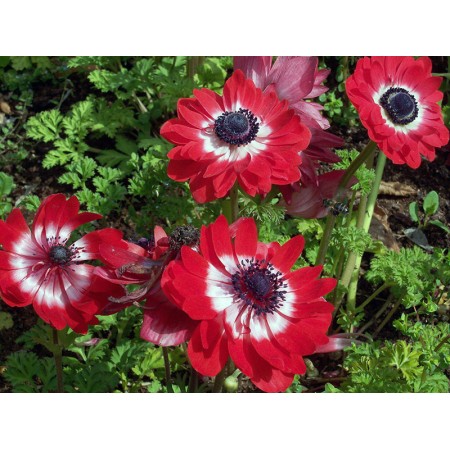Growing Anemones

Anemones are colorful plants that are divided into spring-blooming and summer-blooming. Some varieties have tubers, while others have rhizomes, respectively, and caring for them when planting in a personal summer cottage differs in a number of ways. And in this article we will try to understand all the nuances of how to behave with anemones, so that they always please us with active flowering with many fruit trees.
Preparation for landing
To plant anemones, you will need to select a site with soil, protected from drafts, darkened and spacious. If you have chosen to grow anemones with rhizomes, then one important point should be taken into account - the roots of the flower are very vulnerable and can be damaged even from contact with each other. And sharp temperature changes, in general, will immediately destroy the plant, which does not have time to grow stronger before the onset of the cool season.
Fertile, drained, loose soil is used as suitable soil for planting. To create drainage, you can use simple sand, reducing the acidity of the soil with wood ash or dolomite flour.
If you will use seeds for planting, then get ready for the fact that only a quarter of their total number will turn into a full-fledged flower. You can increase the rate of entry by the method of stratification - act on them with cold for several months. Planted seeds must be well moistened and moved to a place where the air temperature does not rise above 5 degrees Celsius.
After landing care
Caring for the anemone is much easier than achieving a positive outcome before placing it directly in the soil. Here, the main rule is to maintain an acceptable level of air humidity - the indicator is maintained in the range of 50-60%, since rhizomes of the flower can quickly rot due to excessive moisture.
It is not possible to water the soil in the flowerbed too often, it will be enough once a week - in the spring and summer, and once every few weeks - in the winter. As for top dressing, the anemones are very favorable to liquid organics and complex mineral fertilizers. Fresh manure is not suitable for them, since it contains elements that are harmful to the plant. If you have previously fertilized the soil before planting the anemones, then in the future you will not need to add substances at all.
Preparing for the winter
In the second half of autumn, anemones are prepared for wintering. To do this, it should be removed from the soil, dried tubers and cut the tops. The flower is stored in a dark, cool place, placed in sand or peat. An optimal place for a comfortable wintering will be a dark basement, where a stable, cool atmosphere is maintained for several months.